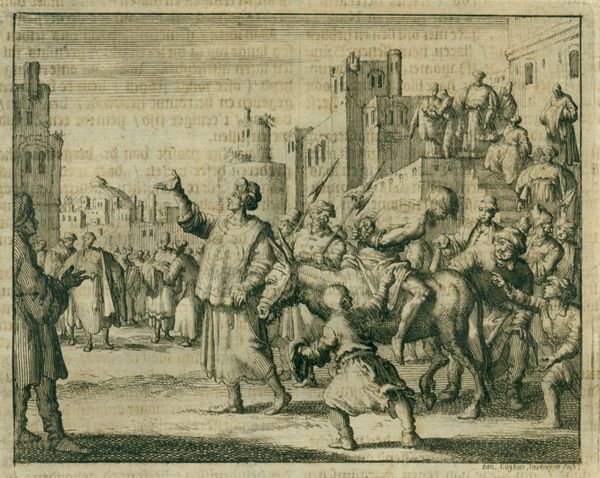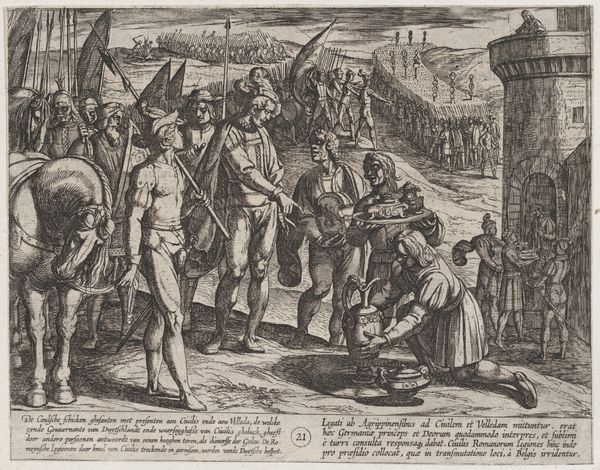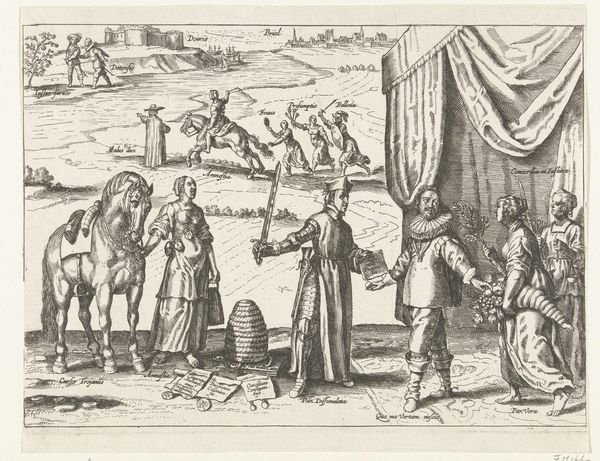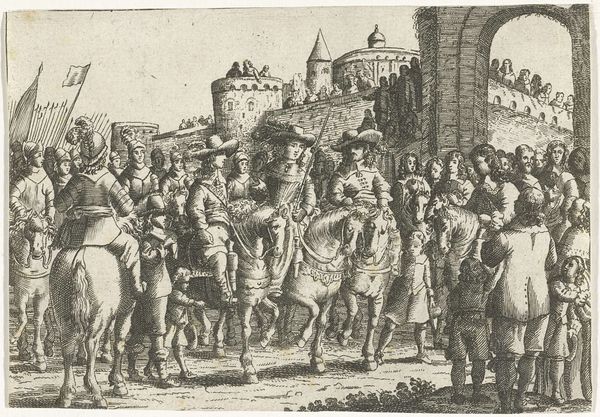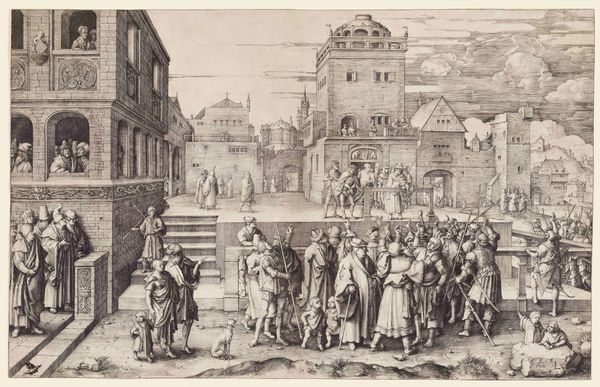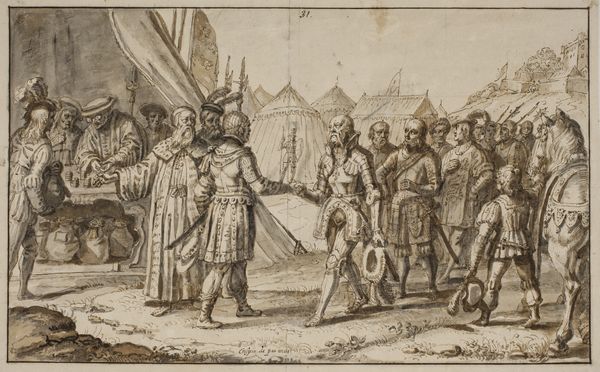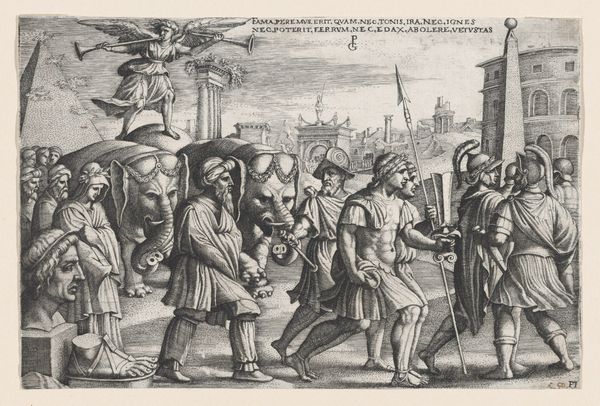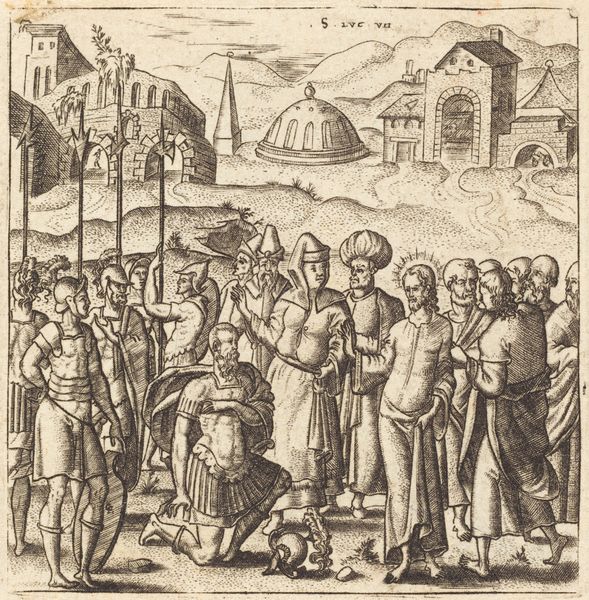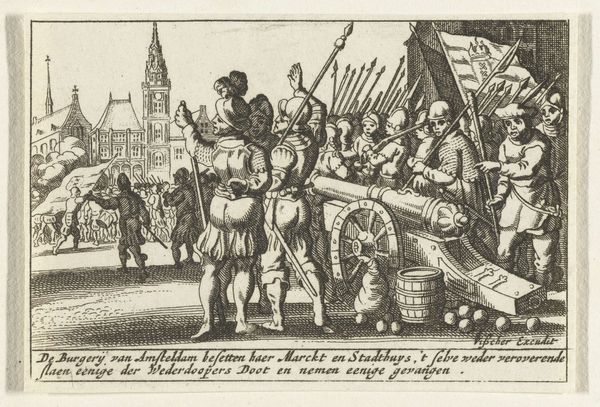
drawing, print, etching, ink
#
portrait
#
drawing
#
baroque
#
dutch-golden-age
# print
#
etching
#
ink
#
cityscape
#
history-painting
Dimensions: 268 mm (height) x 390 mm (width) (bladmaal)
Curator: Just look at all of that! There's something immediately striking about the formality and the sort of controlled chaos, isn't there? Like a staged play about to erupt. Editor: Indeed! What we're observing is a drawing from "The Kronborg Series", etched in ink by Crispijn de Passe II around 1640. It is a depiction of Kronborg Castle with a lot going on in the foreground. It’s quite informative when you consider its place within Dutch Golden Age art. Curator: Informative, yes, but also… intense! All those figures packed in, their faces a bit blurry – it gives a real sense of suppressed energy. I’m drawn to the light reflecting off of the water – all those incredible boats. But there is so much to distract me: is that an ox with a dude about to… to do what to it? It definitely takes a moment to realize what's happening! Editor: That would likely have been understood as an obvious reference to sacrifice for those who saw the image then. This particular composition blends the cityscape with what was likely designed to feel like a major historical event; consider how printed images like this served to disseminate news and political ideologies at the time. Curator: Right, right… propaganda via pretty pictures! But back to the artistic intent – you see the way the artist layered everything, building up to the castle backdrop? To my eye, the image is less about capturing the 'truth' of the place, and more about dramatizing a political message. Maybe it sounds simple, but I wonder: how often did the news feel like truth then or now? I still struggle with that. Editor: I understand what you mean, especially thinking about it as truth and in the past versus our post-truth world. But de Passe was likely aiming for a visual representation of power, reinforcing the importance of Kronborg Castle and perhaps by extension, the Danish crown, for those who saw the image. Curator: Hmmm... well, even with its propagandistic vibe, I can appreciate how de Passe uses the etching to create a sense of depth and texture. There’s a certain skill in making political spin look so darn aesthetically pleasing. Editor: Absolutely! It reminds us how artworks always operate on multiple levels simultaneously. From news dissemination to high aesthetic accomplishment! Curator: Well, I think I’ll walk away from it remembering not just what it tells me about then, but what that sacrifice implies about political machinations in our time. Editor: A great reflection, I think I’m going to examine how that imagery traveled through prints in this period. Thanks!
Comments
No comments
Be the first to comment and join the conversation on the ultimate creative platform.

